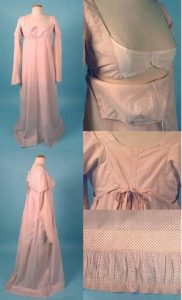© Cheryl Bolen
(This article first appeared in A Covent Garden Gilflurt's Guide to Life.)
The Duke of Wellington and Napoleon opposed each other not
only on the battlefield but also for the affections of a certain beautiful lady.
That lady, Madame Recamier, spurned both of these powerful men. Napoleon was so
outraged, he banished her from France and her famed Parisian salon where authors
and intellectuals—most of whom despised Napoleon—gathered.
In an era when, as Lord Egremont said, “Women considered it
a stain upon their reputation if they hadn’t taken a lover,” Juliette Recamier
(1777-1849) went four decades without knowing a lover—not even the wealthy,
much-older banker she had married at age 15.
Called a figid coquette, Madame Recamier directed her
sensuous flirtations on virtually every man who came to her salon on rue du
Mont-Blanc—and most of them became captivated by her beauty and voluptuous
charm. Author and political philosopher Benjamin Constant said, “Madame
Recamier takes it into her head to make me fall in love with her . . . My life
is completely upset.” For the next fourteen months, he was tortured by his unrequited
love for her.
He was one of dozens over the years.
Lady Bessborough, who
was among the English aristocrats who flocked to Paris in 1802 after the
signing of the short-lived Treaty of Amiens, gives this interesting account of
meeting the beautiful Madame Recamier.
I must tell you
[Lady Bessborough wrote to her lover, Granville Leveson Gower] tho’, a nasty and an indelicate story, but
how distress’d I was at Mad. Recamier’s. We went there and found her in
bed—that beautiful bed you saw prints of—muslin and gold curtains, great
looking glasses at the side, incense pots, &c., and muslin sheets trimm’d
with lace, and beautiful white shoulders expos’d perfectly uncovered to view—in
short, completely undress’d and in bed. The room was full of men.
During her salons, Madame Recamier commonly reposed on a
chaise longue—a piece of furniture which would later be named a recamier in her
honor. A famed portrait by Jacques Louis David of her on her chaise longue
hangs in the Louvre.
The only child of
Marie Julie Matton and Jean Bernard, the king’s counsellor, Juliette was born
in Lyon, but the family later moved to Paris. During the Reign of Terror, she
married Jeanne-Françoise Julie Adélaïde Récamier, who was 27 years her senior.
Mystery surrounds the marriage. There is some credence that Recamier married to
pass on his fortune if he should fall to the Terror. It was said he was very
close to Juliette’s mother. Some suggested Juliette remained a virgin
because Recamier was her natural father, but this has been discounted.
As she neared the age of thirty, Madame Recamier finally
fell victim to Cupid’s arrow when she fell in love with Prince Augustus of Prussia,
a nephew of Frederick the Great. They met in the Swiss home of her friend, the
famed Madame de Stael, who encouraged the romance. Juliette Recamier wrote to
her husband to ask for a divorce, but at the time he was besieged with
financial woes (he eventually went bankrupt). His response appealed to her
sensibilities while telling her she could not have picked a worse time. He also
expressed regret that he had respected her virginal susceptibilities.
Writing years later about her lover, Madame Recamier said,
“We were convinced that we were going to be married, and our relationship was
very intimate; even so, there was one thing he failed to obtain.”
 |
| Prince Augustus' portrait with Madame Recamier's portrait behind him. |
Before the two lovers parted, they exchanged written
promises. Prince Augustus wrote, “I swear
by my honor and by love to preserve in all its purity the sentiment that
attaches me to Juliette Recamier, to take all steps that duty allows to unite
with her in the bonds of marriage, and to possess no woman as long as there is
hope that I may join my destiny with hers. AUGUST, PRINCE OF PRUSSIA.”
Madame Recamier wrote, “I
swear by the salvation of my soul to preserve in all its purity the sentiment
that attaches me to Prince August of Prussia; to do everything that honor
permits to dissolve my marriage, to have no love nor flirtation with any other
man, to see him again as soon as possible, and, whatever the future may bring,
to entrust my destiny entirely to his honor and his love. J. R.”
The Recamiers did not divorce, and Prince Augustus never
married, though two of his long-time mistresses bore him eleven children. Ten
years after he fell in love with Juliette Recamier, he had his portrait made
standing in front of her portrait.
Back in Paris, the Recamiers were forceed to sell their house
on the rue du Mont Blanc, their silver, and Juliette’s jewelry. She suffered
the losses with the same languid serenity that governed her life. By 1809,
Recamier was once again in business but on a much smaller scale.
Even though her circumstances were reduced, Madame
Recamier’s salons were as popular as ever. Later she resided in apartments in a
former convent, now demolished, at 16 rue de Sèvres in Paris.
It is believe she finally lost her virginity at age 40. Her
lover was the 50-year-old author Chateaubriand.
Her husband died in 1830. She lived another nineteen years
before cholera claimed her at age 71. She was buried in the Cimetiere de
Montmarte.—by Cheryl Bolen, whose three Pride and Prejudice Sequels are now available.
Resources
Herold,
J. Christopher. Mistress to an Age: A Life of Madame de Staël. The Bobbs-Merrill
Company, Inc., 1958.
Lady
Granville, The Private Correspondence of
Lord Granville Leveson Gower, 2 vols., London, John Murray, 1917.











